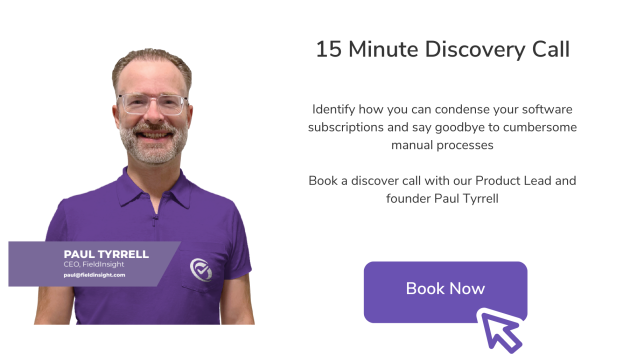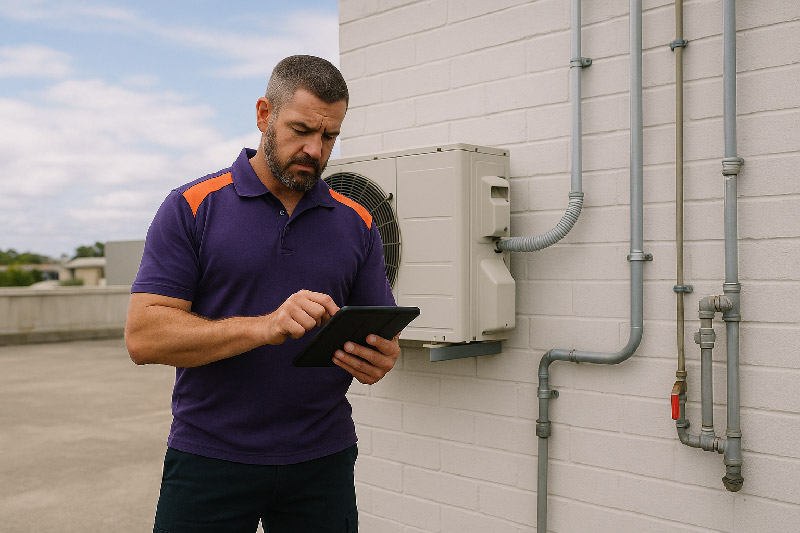Elevating HVAC Customer Retention: Prioritizing Service and Value

In the commercial HVAC industry, customer retention holds paramount significance. Retaining customers not only fosters brand loyalty but also contributes significantly to the overall success of HVAC businesses. By focusing on customer retention, companies can build lasting relationships, improve their reputation, and ensure a steady stream of revenue.
Achieving this requires a delicate balance between online strategies and direct service excellence. In today’s digital age, online platforms provide opportunities to engage with customers on a broader scale. However, the true essence of HVAC customer retention lies in the quality of service provided. While online strategies like social media engagement and personalized email campaigns are crucial, they must complement the core goal of delivering exceptional service.
A customer-centric approach yields long-term benefits that extend beyond immediate financial gains. When customers feel valued and receive top-notch service, they are more likely to become advocates for the business, spreading positive word-of-mouth and referring friends and family. This organic growth can substantially reduce customer acquisition costs and pave the way for sustained success.
For businesses looking to implement a customer-centric approach, platforms like FieldInsight offer valuable tools and insights.
Let’s dive into how you can build long term relationships with proven techniques to allow you to create customer lifetime value.
The Pillars of Exceptional HVAC Service Delivery (Steps for customer retention strategy)
Exceptional HVAC service delivery rests upon several fundamental pillars that collectively elevate customer satisfaction and retention. These pillars for HVAC customer retention strategies serve as guiding principles for HVAC companies seeking to provide unparalleled service experiences.
Consistency: The bedrock of exceptional service lies in unwavering consistency. HVAC customers rely on receiving the same high-quality service every time they interact with an HVAC company. Consistency breeds trust and reassurance, as customers can depend on their systems being handled with care and expertise, regardless of the situation.
Responsiveness: Timeliness is paramount in the HVAC industry, particularly during emergencies. Responding promptly to service requests and urgent situations demonstrates a company’s dedication to its customers’ well-being. Whether it’s a sudden breakdown in extreme weather or a routine maintenance call, a responsive approach fosters a sense of reliability and care.
Transparency: Clear communication is key to fostering positive customer relationships. Being transparent about service costs, timelines, and expectations helps customers make informed decisions. No one likes surprises when it comes to expenses or the duration of service. Transparent communication builds trust and reduces misunderstandings.
Training: The HVAC landscape is constantly evolving with technological advancements and industry updates. Thus, continuous technician training is imperative. Technicians should be equipped with the latest knowledge and skills to address modern HVAC challenges effectively. Well-trained technicians not only provide accurate solutions but also convey professionalism and confidence to customers.
Incorporating these pillars into HVAC service delivery guarantees customer retention (loyal customers), great customer service, and a happy HVAC business owner.
Consistency ensures that every interaction is of the highest quality, responsiveness shows a commitment to customers’ needs, transparency cultivates trust, and ongoing training reflects a dedication to excellence. By embracing these pillars, HVAC companies can differentiate themselves in a competitive market, securing long-term customer loyalty and growth. For both your existing customers and new customers, this plan will help you in your customer retention plan.
Asset Management: Ensuring Longevity and Trust
Effective asset management is a cornerstone of maintaining HVAC systems, ensuring their optimal performance, and fostering customer trust. By prioritizing regular maintenance, using high-quality parts and equipment, and adopting a proactive approach, HVAC companies can not only extend the life of systems but also establish themselves as reliable partners in their customers’ comfort.
Regular Maintenance: Regular maintenance plays a vital role in maximizing the lifespan of HVAC systems. Scheduled inspections, cleaning, and adjustments prevent minor issues from escalating into major breakdowns. This approach minimizes wear and tear, reduces energy consumption, and helps systems operate efficiently throughout their intended lifespan.
Quality Parts and Equipment: The use of quality parts and equipment is non-negotiable for sustained HVAC system performance. Inferior components can lead to premature failures, compromising the system’s efficiency and reliability. Investing in reputable parts not only ensures better performance but also reduces the frequency of repairs and replacements, saving customers both time and money.
Trust-Building Proactive Management: Proactive asset management is more than just maintaining systems; it’s about building trust. When HVAC companies take the initiative to manage and care for systems before problems arise, they demonstrate a commitment to their customers’ comfort and well-being. This trust-building approach fosters loyalty, as customers feel confident that their systems are in capable hands.
Customer Retention: Proactive asset management directly contributes to customer retention. When customers experience hassle-free operation and longevity from their HVAC systems, they’re more likely to remain loyal to the company that provided such value. Satisfied customers are not only repeat customers but also advocates who spread positive word-of-mouth, enhancing the company’s reputation.
In conclusion, asset management in the HVAC industry is a multifaceted strategy that extends the life of systems and nurtures customer trust. Regular maintenance, the use of quality parts, and proactive management collectively contribute to exceptional performance and reliability. By implementing these practices, HVAC companies can solidify their position as trusted partners, ensuring customer satisfaction and long-term retention.
Personalized Customer Experiences
Understanding the distinct needs and preferences of individual customers holds immense value in today’s competitive business landscape. By offering personalized experiences, HVAC companies can create meaningful connections, foster customer loyalty, and stand out in a crowded market.
Understanding Customer Needs: Every customer is unique, and their HVAC requirements can vary significantly. By taking the time to understand their specific needs, companies can provide tailored solutions that address challenges and enhance comfort effectively. This understanding can be gleaned from previous interactions, historical data, and open communication with customers.
Personalized Service Plans: Generic service plans often fall short in meeting diverse customer needs. Personalized service plans, on the other hand, align with each customer’s situation, considering factors like system age, usage patterns, and maintenance history. These plans not only optimize system performance but also show customers that their comfort is a top priority.
Tailored Recommendations: Offering tailored recommendations showcases a company’s expertise and commitment to customer satisfaction. Whether it’s suggesting energy-efficient upgrades, recommending indoor air quality solutions, or providing maintenance schedules that suit a customer’s lifestyle, personalized advice demonstrates a genuine interest in enhancing their well-being.
Customized Solutions: HVAC challenges can be complex, but customized solutions can simplify the process for customers. Whether it’s designing a zoning system for precise temperature control or proposing cost-effective alternatives for equipment replacement, tailor-made solutions address specific concerns and provide lasting value.
Leveraging Customer Data Responsibly: Personalization thrives on customer data, but it’s crucial to handle this information responsibly. HVAC companies can leverage customer data for personalized service delivery without compromising privacy. Anonymized and aggregated data can yield insights into broader trends, while encrypted systems and stringent privacy measures safeguard individual information.
Feedback and Continuous Improvement
Actively seeking customer feedback post-service is a cornerstone of effective service delivery. It not only demonstrates a commitment to improvement but also offers valuable insights into customer satisfaction and areas for enhancement.
Methods of Collecting Feedback: Gathering feedback can take various forms, from direct interviews and surveys to digital communication channels. Direct interviews allow for in-depth insights, while surveys and online feedback forms offer convenience. Comment cards, interactive platforms, and follow-up calls are also effective ways to encourage customers to share their experiences.
Role of Feedback in Continuous Improvement: Feedback serves as a catalyst for continuous service improvement. By listening to customer suggestions, identifying pain points, and addressing concerns, HVAC companies can refine their offerings and streamline their processes. This iterative approach ensures that services evolve to meet changing customer needs and market trends.
Innovation through Feedback: Customer feedback not only drives improvement but also sparks innovation. Insights gathered from customers can inspire new service offerings, technology integration, or process optimizations. By embracing innovation based on feedback, HVAC companies position themselves as industry leaders, attracting both new and repeat customers.
Building Loyalty Through Value-Added Services (Existing customers)
Value-added services go beyond the standard offerings to provide extra benefits and convenience. These services play a pivotal role in building customer loyalty and trust by demonstrating a commitment to their well-being and satisfaction.
Concept of Value-Added Services: Value-added services encompass a range of offerings, such as extended warranties that offer peace of mind, loyalty discounts that reward repeat business, and preventive maintenance plans that proactively ensure system health. These services enhance the overall customer experience and go beyond the core HVAC service.
Enhancing Customer Loyalty: Value-added services create a sense of added value and differentiation. Customers who receive extended benefits are more likely to remain loyal to the company providing those benefits. Such services foster a deeper sense of trust, as customers recognize the effort invested in their long-term comfort and satisfaction.
Examples of Successful Value-Added Services: In the HVAC industry, successful value-added services include comprehensive maintenance packages that cover routine check-ups and priority service, loyalty programs offering exclusive discounts and perks to returning customers, and remote monitoring systems that provide real-time insights into system performance.
Actively seeking feedback, utilizing it for continuous improvement, and offering value-added services are essential strategies for HVAC companies looking to excel in customer retention. By engaging customers in shaping services and providing additional benefits, companies not only meet current expectations but also exceed them, solidifying their position as trusted partners in comfort and reliability.
Community Engagement and Building Trust for a HVAC Business
Being an active member of the local community holds immense value for HVAC businesses. Engaging with the community through various strategies fosters a sense of belonging, builds trust, and positions the business as a respected partner in the area.
Importance of Community Involvement: HVAC businesses are more than service providers; they are integral parts of the communities they serve. Actively participating in the local community showcases a commitment beyond transactions, signaling a genuine interest in the well-being of residents and the region as a whole.
Strategies for Community Engagement: Hosting local workshops and seminars on HVAC maintenance and energy efficiency not only educate residents but also establish the business as a knowledgeable resource. Participating in community events, whether it’s a fair, charity run, or festival, creates opportunities for face-to-face interactions and networking. Supporting local causes through sponsorships or volunteering demonstrates a commitment to shared values and community improvement.
Trust-Building Aspect: Community engagement is a powerful trust-building tool. When HVAC businesses invest time and resources in community initiatives, they showcase their dedication to the community’s betterment. This commitment naturally extends to the services they provide, fostering trust among residents who recognize the business as a genuine, caring partner.
Local Brand Affinity: Engaging with the community creates a sense of brand affinity. Customers are more likely to choose a business that they perceive as actively contributing to the community’s welfare. This affinity leads to repeat business, positive word-of-mouth, and increased customer loyalty.
Conclusion: Elevating HVAC Customer Retention Through Customer-Centric Strategies
In the dynamic world of HVAC services, customer retention emerges as a critical factor for long-term business success. Throughout this discussion, we’ve explored the multifaceted approaches that HVAC companies can embrace to enhance customer retention, ultimately securing their position as trusted partners in comfort and reliability.
We’ve delved into the significance of service excellence, highlighting the pillars of consistency, responsiveness, transparency, and continuous training as foundations for exceptional service delivery. Understanding customer needs and preferences, tailoring service plans, and offering personalized solutions emerged as key factors in fostering lasting customer relationships.
Asset management emerged as a pivotal strategy, emphasizing the role of regular maintenance, quality parts, and proactive management in extending the lifespan of HVAC systems. By prioritizing asset management, companies not only ensure customer comfort but also cultivate trust through their commitment to system longevity.
Community engagement, another critical facet, showcased the value of businesses actively participating in their local communities. Strategies like hosting workshops, participating in events, and supporting local causes not only build brand affinity but also create an environment of trust, where HVAC companies are recognized as genuine contributors to community well-being.
Incorporating software like FieldInsight can further bolster your customer-centric efforts. FieldInsight provides comprehensive solutions for commercial HVAC businesses, streamlining operations and enhancing service quality. From scheduling and dispatching to asset management and reporting, FieldInsight empowers your team to deliver outstanding service consistently.
In conclusion, service excellence, asset management, and community engagement form the trifecta that drives HVAC customer retention. By focusing on these customer-centric strategies and leveraging tools like FieldInsight, businesses can foster loyalty, build trust, and position themselves for sustained success in the competitive HVAC landscape.
As you navigate the HVAC industry, we encourage you to prioritize customer-centric approaches. By embracing service excellence, efficient asset management, active community engagement, and innovative solutions like FieldInsight, you’ll not only enhance customer retention but also lay the foundation for enduring business growth and prosperity. Your dedication to meeting customer needs and exceeding their expectations, combined with cutting-edge tools, will undoubtedly shape the future of your HVAC enterprise.
What You Should Do Now
- Book a Demo. You’ll be in touch with an automation expert who has worked in this space for over 5 years, and knows the optimal workflow to address your needs.
- If you’d like access to free articles about managing HVAC workflows, go to our blog.
- If you know someone who’d enjoy reading this page, share it with them via email, Linkedin, Twitter, or Facebook.








